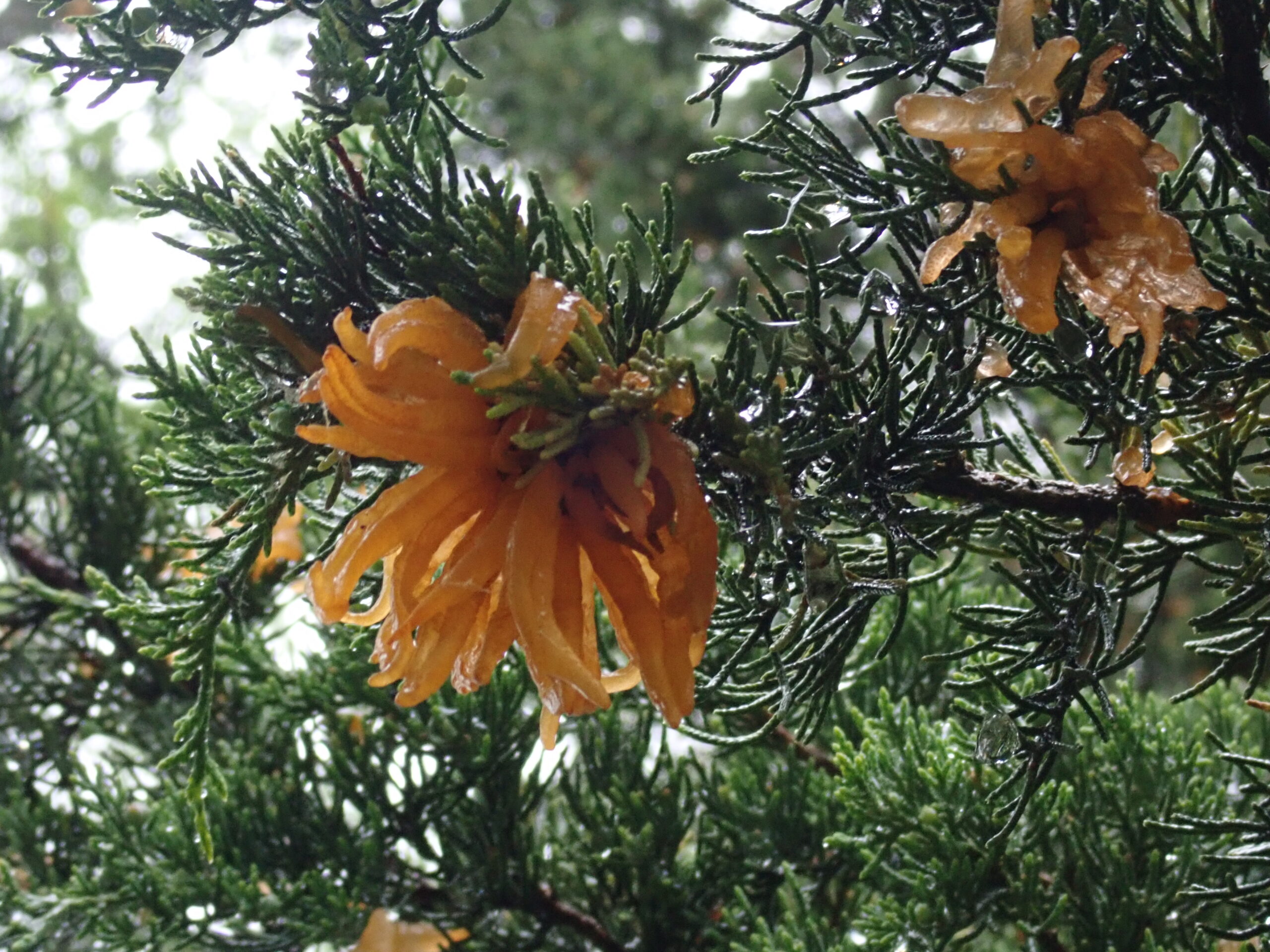By Ethan Wachendorf, DNR Forest Health Lab Technician, Fitchburg, ethan.wachendorf@wisconsin.gov or 608-273-6276
Have you noticed orange, jelly-like growths on cedars this spring? These growths may look like tiny octopus creatures with legs extending all directions, but they’re actually spore horns caused by a fungus.
Spores of the cedar-apple rust fungus (Gymnosporangium juniperi-virginianae) are produced from spore horns. As the horns dry up at this time of year, spores are discharged and carried by wind to nearby apple/crabapple trees to infect their leaves and fruit. Different spores are produced from the undersides of infected leaves in late summer and are windblown to start new infections on cedar/juniper.
The fungus causes galls, or swellings, on twigs, from which orange spore horns develop the following spring. The horns can be 1/2 inch long and 1/8 inch in diameter. They appear in May following rainy periods and last for a few weeks. Because the fungus needs to move from one group of hosts, apple/crabapple, to another group, cedar/juniper, to complete its life cycle, the disease is called cedar-apple rust.
While the disease does not seriously affect the health of its host trees, it has the potential to cause serious crop reduction in susceptible apple/crabapple cultivars. To avoid this, plant apple/crabapple trees that are resistant to cedar-apple rust. Additionally, prune galls on cedar/juniper to help reduce the number of spores for the following spring. Or, just enjoy the beautiful artwork of a fungus and spring rain.
There’s a chance that the “orange goo” you see may be something different. For identification information, check out this article.

